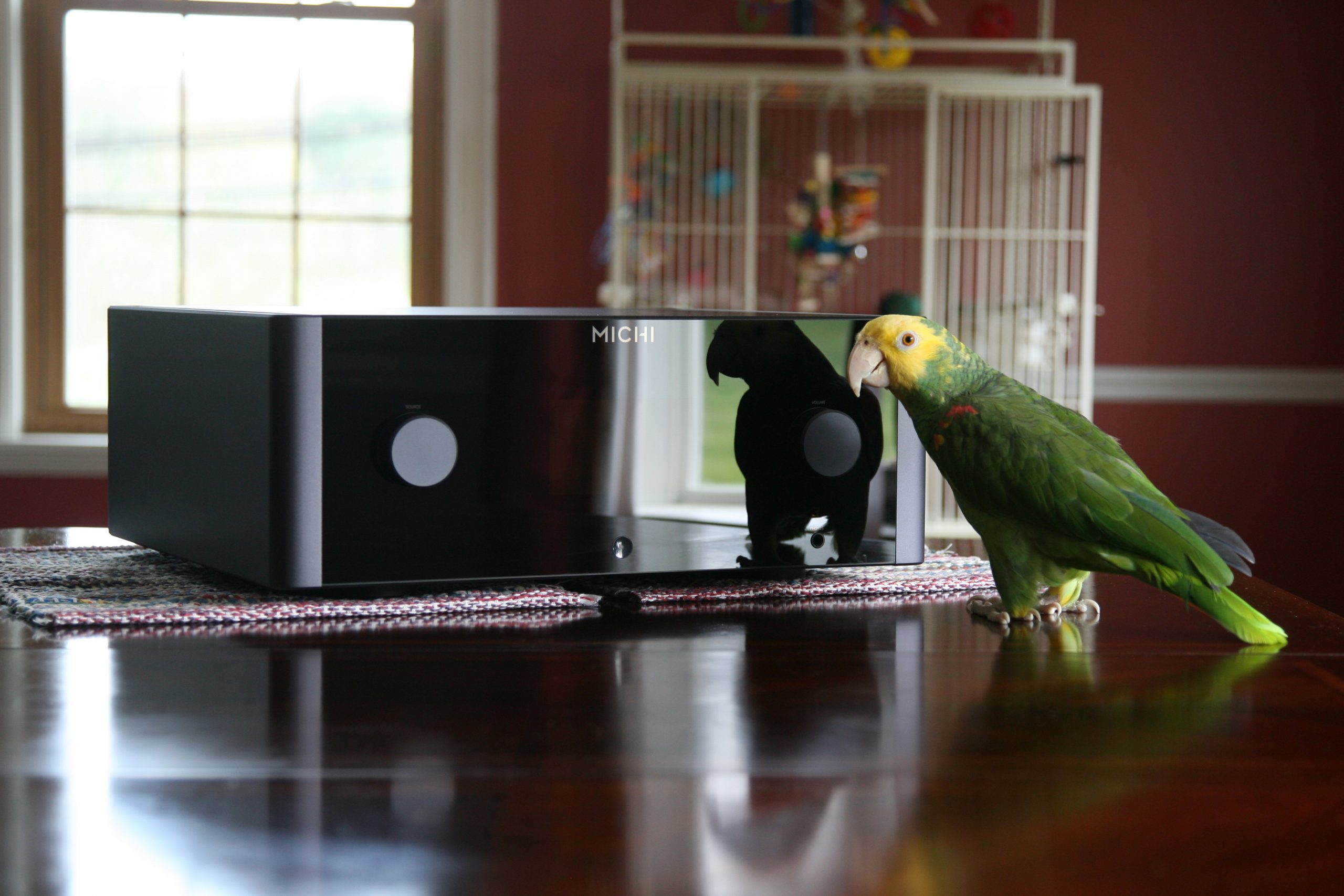A lot of companies that offer mid or entry-level products like to break into high-end markets, this is no different in the audio world. Whether they are successful or not depends on loads of factors, sound quality, branding, price and competitor to name a few. Rotel is a very well-known brand in the audio world, especially in home theater. They have offered quite a few multi-channel amps and processors over the years. They are not a name I hear come up as much in the two-channel music scene though, however, that all changes with the introduction of the new Michi lineup. The Michi name was originally launched in the ’90s primarily in Japan, though certainly spreading throughout the world. The new Michi offers 2 integrated amplifiers, a preamp, and two power amp options. We are focusing on the X5 Integrated amp, which is the larger of the two, being the X5 and X3. Michi (道) in Japanese has a few meanings, The Way, Direction or Path, seemingly dependent on dialect. Is the revived Michi name The Way of Rotels future? That is what we intend to dig into.
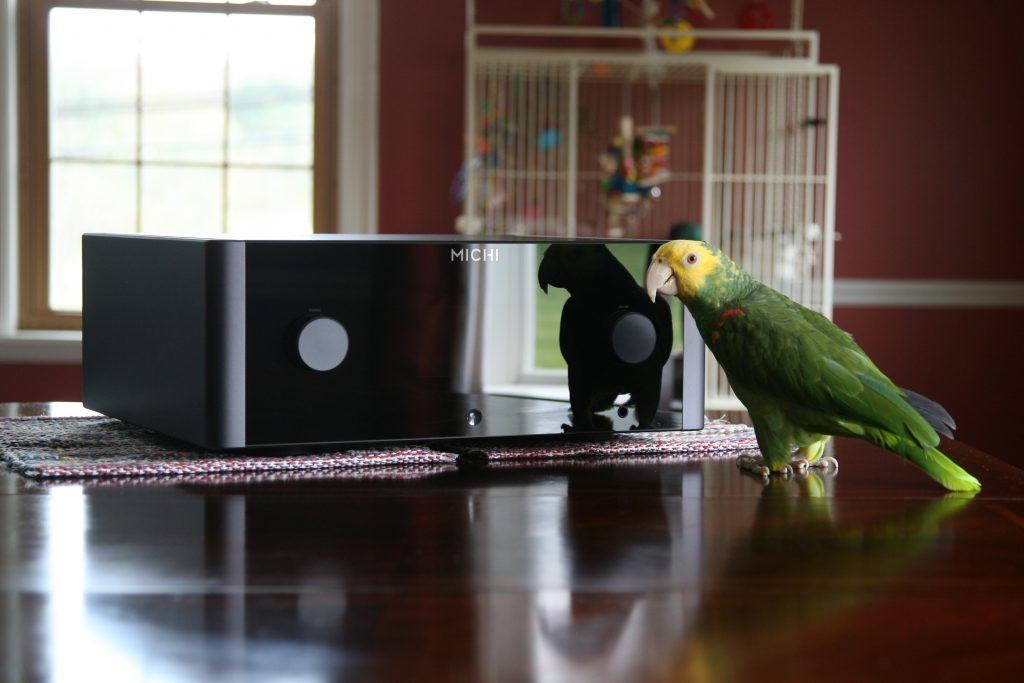
The Michi X5 is the most expensive piece of gear we have reviewed so far at an MSRP of $6999.00 U.S. The exciting part of this for us is that we got to spend a good amount of time really seeing if the High End of audio is worth the price tag. The thing is, we have played with integrated amps that cost significantly less and sound good. So is there thousands of dollars worth of room for improvement? The short answer is yes, the long answer is, well long.
Unboxing and Setup
The X5 was delivered on a small pallet in a substantial pro audio case, certainly hinting at what was inside. Most integrated amps are shipped in your standard boxes, this is not your standard integrated amp. After getting the more than 100lb case in the house we opened it up and started unpacking the X5 which is packaged to survive just about anything. I highly recommend having help getting the X5 out of the case, as it alone weighs 96lbs, and you don’t want to drop it and have a hole in your floor. After we got it all unwrapped we moved it into the music room and placed it on my amp stand between our pair of Martin Logan Aerius I’s. My DIY amp stand is pretty large but the Michi X5 almost doesn’t fit on it. At 19” wide, 7 5/8” tall, and 17 3/4” deep, this is not a small amp and something to keep in mind when considering where you may want to use it. Most integrated amps in the consumer world are about 17” wide and 14” deep so when looking at audio stands or racks keep the dimensions and weight in mind. After getting the X5 in place it was time to connect all the sources and other cables. Initially, I just used my FIIO M9 playing Flac files through the built-in DAC just to go through the settings and options.

Setup is very simple, as simple as plugging it in, connect a source, speakers, and play. You have a couple of tone options one option being temporary and the other being saved. At any time you can press the Audio button on the remote and change the treble and bass levels depending on your mood or what you are listening to at the moment. When you turn the X5 or change the source these go back to default. If you find your room or speakers need the boost in the highs or lows all of the time you can adjust the tone in the settings menu for each source and these will be saved. The remote by the way may just be the most beautiful and substantial remote I have ever used, the body of which is made from metal with a great flat finish and gloss buttons. Perfectly matching the finish on the X5 itself. You do need a Torx bit driver to change the batteries, however, this is supplied. If you are not into using the remote for some reason the front panel of the X5 has two large knobs, one for source selection and the other for volume which both have such a satisfying feel to them. I don’t know about you but a good knob feel really does something for me, which may be the reason you don’t want to use that sexy remote.
Michi X5 Sound
The Michi X5 is a fully solid-state amplifier, which lends to the sound produced. Many two-channel amps now have a tube pre-stage and solid-state power stage, Rotel opted to go with solid-state throughout. Neither option is right or wrong, or better or worse, when executed well they both have their own distinct profile. The Michi profile reminds me of my Pass-designed Nakamichi PA5 Stasis, it just does it better. Nelson Pass designed very clean-sounding amplifiers which is a sound I like personally. The Michi has such a clean, undistorted sound that is just exciting and with 600wpc (watts per channel) into 4 ohms there is so much headroom before you approach any audible distortion. I know we often use words like clarity and detail, and the more they get used, the less they hold meaning, that said the Michi X5 offers more clarity and detail than I have experienced in most Integrated amplifiers. When combined with such a detailed speaker as Martin Logan electrostatics, you miss nothing in your music. Music sounds open and spacious, even sitting in my music room, the presence is more like an outdoor amphitheater.
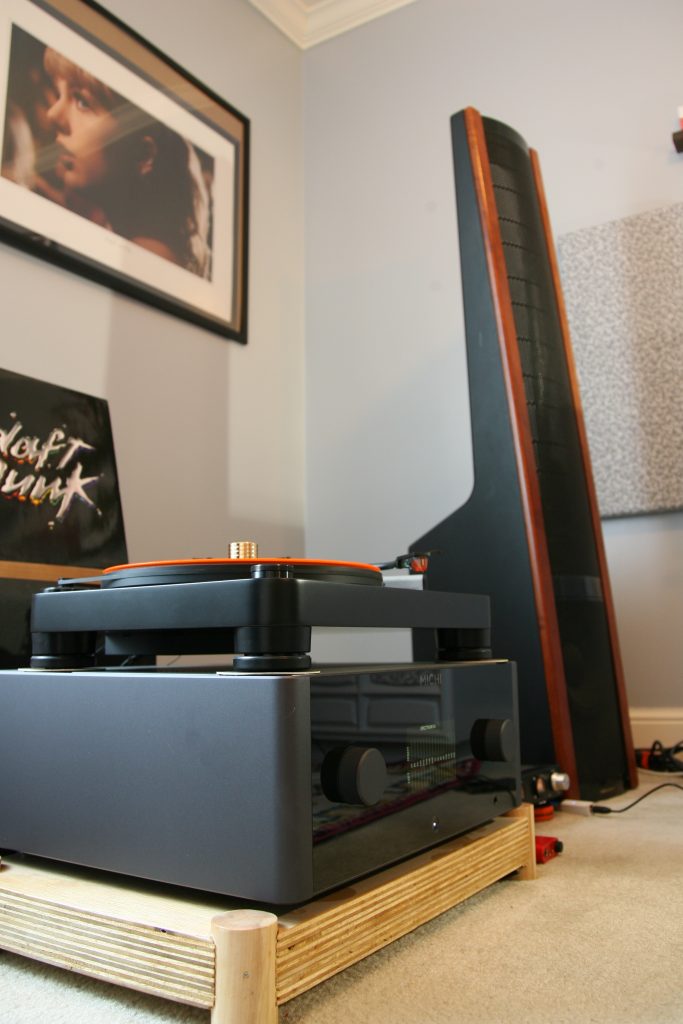
Some amplifiers, especially solid-state units can suffer from a lack of richness or body in the music, at times in the pursuit of that clarity and detail we tend to crave. Rotel managed to keep the rich, deep tones in the music while excelling in detail. I have heard solid-state amps in the past that sound thin and lifeless, typically they have been entry-level integrated amps. I have an old Sony receiver in my workshop with a pair of Polk Monitor 7’s and it certainly falls to that fate, for a shop system it sounds better than most but nothing to write home about. A popular way around this is opting for a tube pre-stage as mentioned above, though clearly not the only way as this Michi has no tubes. The X5 provides a substantial depth to the music, drawing you in and making you feel more a part of what you are hearing. I think for most of us, that is the goal, to experience our music and appreciate it for more than just hearing it. If you ask me what I mean by a rich sound, think of it as a cake, some have a very thin flavor profile, you taste the chocolate but it’s not actually there. Now when someone bakes a cake and it has actual chocolate layered in and perhaps different types and the chocolate is used in different ways there is an exceptional richness. With sound, it is similar, when you listen on lesser systems you hear the music, you know you are hearing a certain artist and song, but there is something missing. With a high-quality system, you get all the nuances of that song, the small background sounds, the layers of instruments, you hear that light high hat or the distant echo. You get everything that went into making that song the perfect recording to the artist, each little bit that adds to the whole of the work. The body is the thickness so to speak of the music, does it sound sort of hollow and tinny, or is there that warm mid-range of frequencies where most of our music recordings live. There is a phrase, scooping the mids, which refers to EQing a device or even the music itself to have higher bass and treble and lower mids, often to hide the shortcomings of a device. When you pump up the bass and highs it gives the feeling of power and clarity, but upon further listening, you will notice the music sounds like a shell of itself, after all, singers and most instruments are mid-frequency recordings. When I was into car audio and in high school, I used to do this as it made my cheaper audio gear sound better at the time, later when I had more money I bought better speakers and amps and found myself doing this less and less. These days I don’t mess with tone controls at all other as a part of a review to experiment with the equipment and also let you, the readers, know what you can and can not do with a piece of gear. There are certainly times when you may adjust bass or treble up or down some to balance out a set of speakers with your room, though that is quite a bit different than scooping the mids.

To build on the sound quality, something I found very pleasing and somewhat surprising for an integrated amp, was the DAC. I have played with a few dedicated DACs ranging from 100 bucks to over 2 grand for just a DAC. I use my FIIO m9 to play FLAC files and it has a decent DAC in it for the price and would say it’s fairly comparable to most integrated amps in sound quality. That said I did also use its digital out to the coax in on the Michi and noticed an immediate improvement in quality. With other amps, it’s been more subtle of a difference either better or worse. Out of the interest of science, I also have an iFi Diablo in for review and used it as my DAC which was closer to being the subtle difference I expected, though at nearly 1000 US for the Diablo one would expect that. When using the Diable I used the balanced output to the XLR inputs on the X5 which also has a positive effect on sound quality, whereas when using the internal DAC of the FIIO M9 I did not initially use a balanced cable, though later tried this as well and found some improvement again. I would say if your source has a digital out, I recommend trying out the Michi’s DAC, and also take advantage of the XLR input where you can for analog inputs.
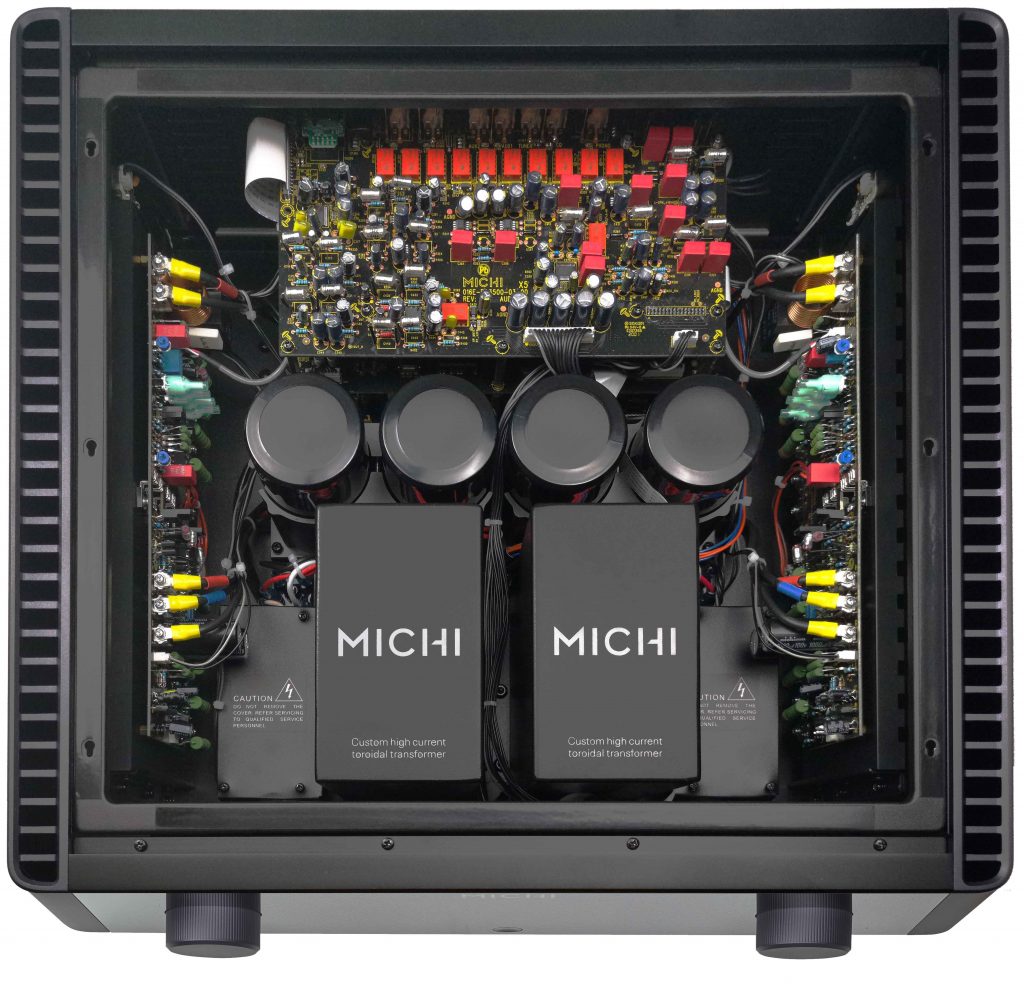
To sum up the overall sound and tone of the Michi through my Martin Logan Aerius I’s, I would say the overarching theme is detail. Detail without the trade-off of warmth, without leaning into that thin sterile sound you can sometimes get. Music is open, the stage is massive and precise. You will notice the nuance and visualize the placement of each sound in front of you with ease. Rotel really knocked it out of the park with the Michi X5.

Technical
DIMENSIONS (W × H × D)
485 x 195 x 452mm
19″ × 7 5/8″ × 17 3/4″
FRONT PANEL HEIGH
132 mm (5 1/4″)
POWER REQUIREMENTS
120V, 60Hz
POWER CONSUMPTION
850W
STANDBY POWER CONSUMPTION
<0.5W
zS/N RATIO (IHF “A” Weighted)
Line Level Inputs: 102dB
Digital Inputs: 102dB
Phono Input: 80dB
NET WEIGHT
43.8kg (96.56 lbs.)
BTU RATING
2194 BTU/h
CONTINUOUS POWER OUTPUT
600W/Ch (4Ω)
350W/Ch (8Ω)
TOTAL HARMONIC DISTORTION (THD)
<0.009%
FREQUENCY RESPONSE
Line Level Inputs: 10Hz – 100kHz (+0 dB, -0.6 dB)
Digital Inputs: 20Hz – 20kHz (0 ± 0.4 dB)
Phono Input: 20Hz – 20kHz (+0 dB, -0.2 dB)
Sources and Listening Test
When we get a piece of equipment in for review, I like to test as much of the device as possible. Use all the various inputs, outputs, and so forth. In the case of an integrated amp, I also like to test out various external components that would replace the internal, such as DACs, Power Amps, and the like. I do not currently have a comparable power amp to what is inside the Michi as it has a room-shaking 600 watts per channel at 4 ohms and my closest option at the moment is 100 watts per channel at 4 ohms. What I do have at the moment is a handful of different DACs to try out, so of course, I did. The First option was to listen straight out of my FIIO M9 into an analog RCA Input. Next, I have an iFi Diablo into XLR, and finally the internal DAC of the Michi. The results were what I expected but more dramatic than I expected. The Michi internal DAC and the Diablo sounded similar, but they both sounded much clearer and fuller than using the FIIO’s built-in DAC. I would say you would have to listen fairly close to determine the differences between the Diablo and the Michi, they are there but subtle.
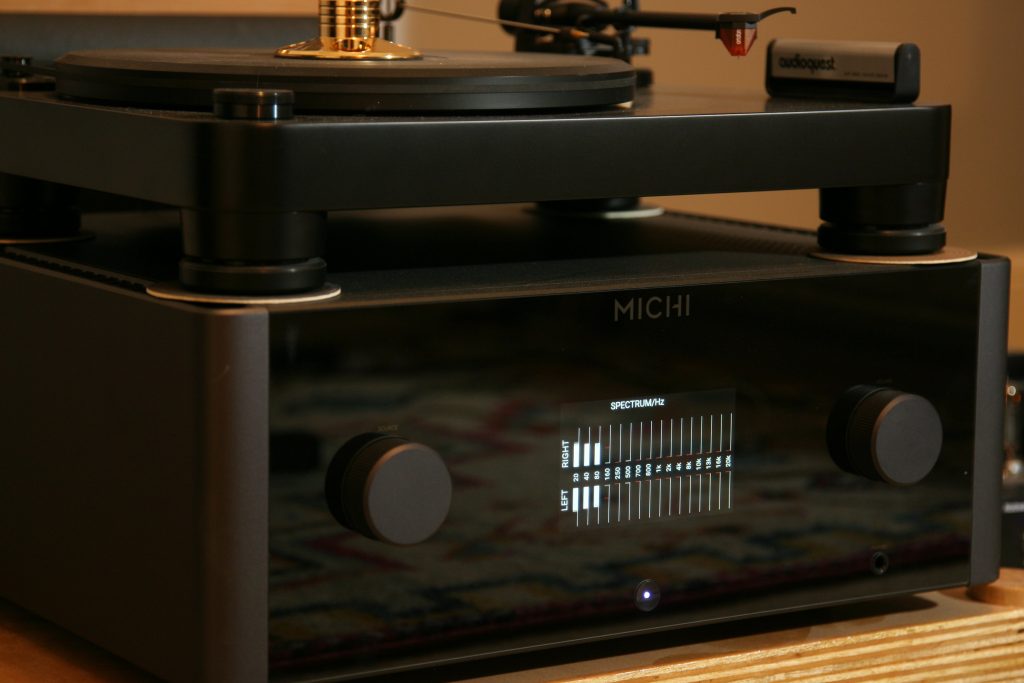
Of course, we had to play some records as well, for this, I hooked up the Audio-Technica LP7 with an Ortofon Bronze cart. The LP7 has a built-in Phono, that can, however, be bypassed in favor of an external option. This is one of the reasons I chose this table, that and a large amount of adjustability for the tonearm for cartridge reviews. First I listened using the Michi phono preamp, then using the Line out and line in on the Michi (cd, all are the same). Finding differences here was more difficult as they were subtle if any, most notably being that when Using Michi’s Phono there was more bass extension. Mid frequencies seemed about the same, and the highs were maybe a bit more pronounced through the Michi but not a day and night change.
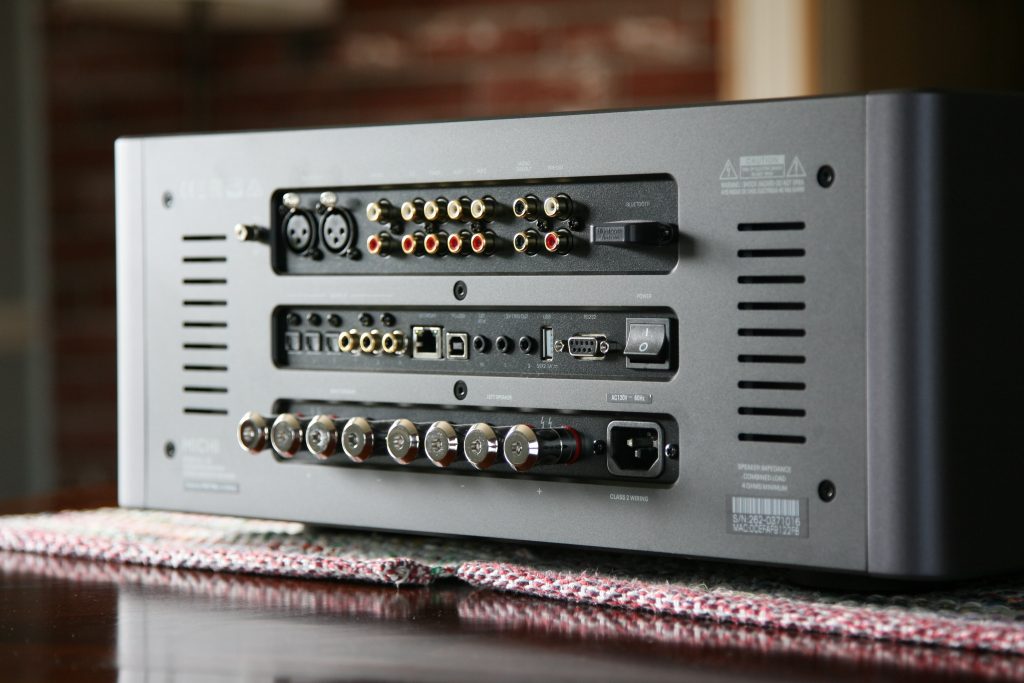
Next, I tried out the Bluetooth connection option, I tend not to really discuss sound quality over this connection as it is limited to Bluetooth and not any particular device. Basically, Bluetooth will only transfer up to a certain bitrate which is dependent on the currently available Codec and associated hardware, essentially meaning Rotel, and all others have no control over this. Currently, the highest bitrate available is with aptx HD which is limited to 24-bit/48kHz resolution. That said one thing I like to test is the responsiveness. I have used multiple Bluetooth devices and not all are created equally, my SR7009 for example is very buggy and slow to respond to the control device, IE. my phone. The X5 is very quick and responded nicely to volume adjustments, song changes, and so forth. Laggy Bluetooth really breaks the convenience making the quality cost pointless.
Conclusion
Rotel knocked this one out of the park, the Michi X5 is a beautiful integrated amp. It changes the landscape for Integrated amps. They are no longer synonymous with entry-level. For many the thought of having a high tier Hifi system meant buying a bunch of separates, not to say that you can not do even better with a dedicated Pre and Power amp, but you can achieve a level of sound quality many would not think possible out of an Integrated amplifier. If you want quality but simplicity or have a space budget something as the X5 offers you exactly what you are looking for. At 7000 dollars though it is not for the faint of heart, as you will still need speakers, cables, and at least one source, for those with more to spend and a desire to get more for that money, the Michi X5 should be absolutely on the audition shortlist. On top of sound quality, you get a great set of inputs to choose from, though I think maybe another pair or two of XLR inputs would be nice for this level of an amp. Looks are clearly subjective so I can not say this is the look you will like, it is however the like I look. I prefer not to have an abundance of buttons and knobs and sliders on the front panel. The effortlessly sleek appearance is contemporary yet shouldn’t look dated in a few years.

The question we asked at the beginning, is Michi living up to the nameplate, is it “The Way”. I believe it is among the best ways, in the world of Hifi we have many paths laid out in front of us to choose from. There is no wrong path, they all lead us along our hobby, different paths have different scenery along the way, offering each of us willing to choose one, a different experience. Rotel has certainly built a wonderful path for users to walk down, for those that like what they see and hear, it very well could be “The Way”.
For information on where to audition and purchase
https://www.rotel.com/dealer-locator
For those In or around Ohio, Please check out Sound and Vision for Rotel and Michi products, link below:
https://www.soundandvisionohio.com/







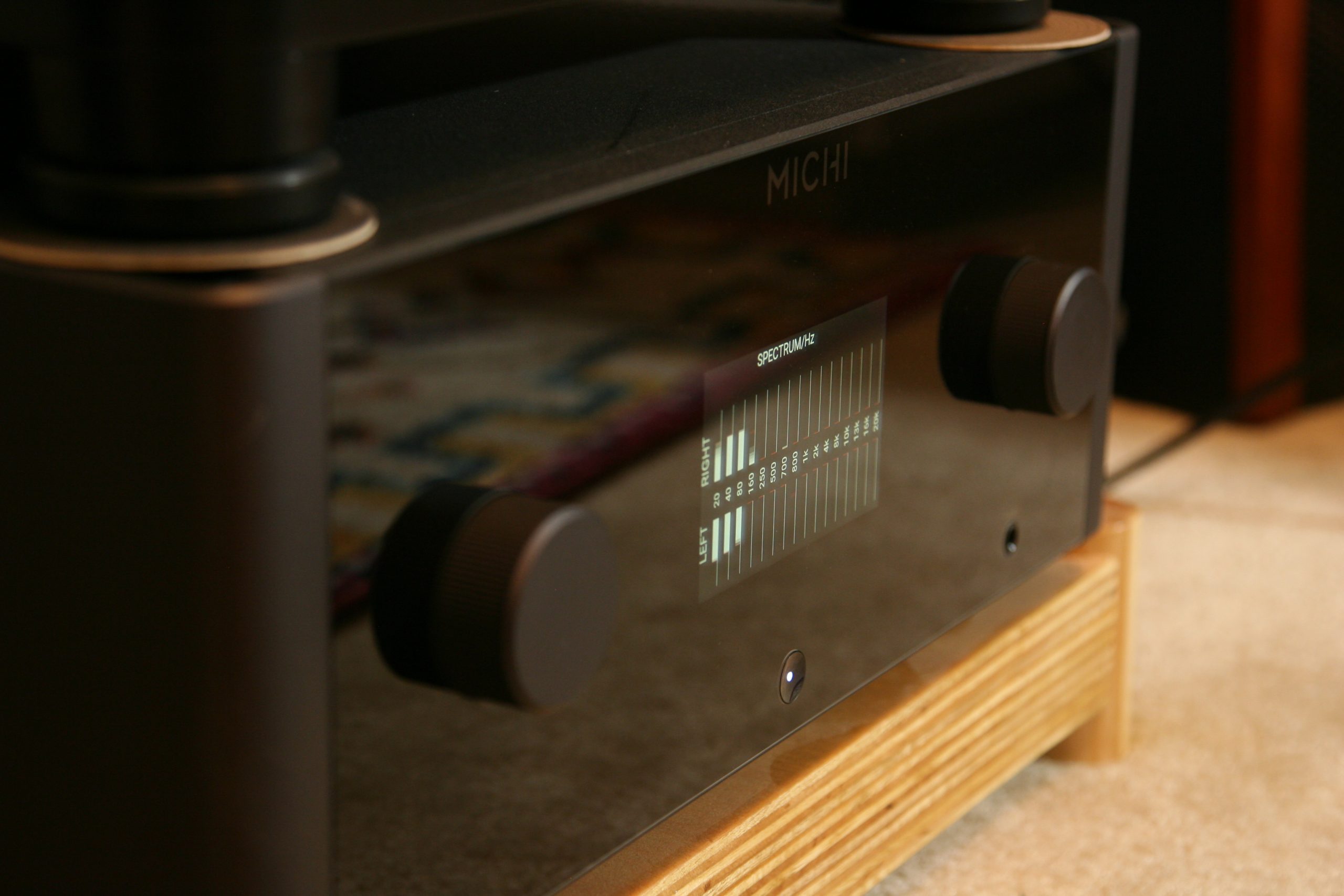

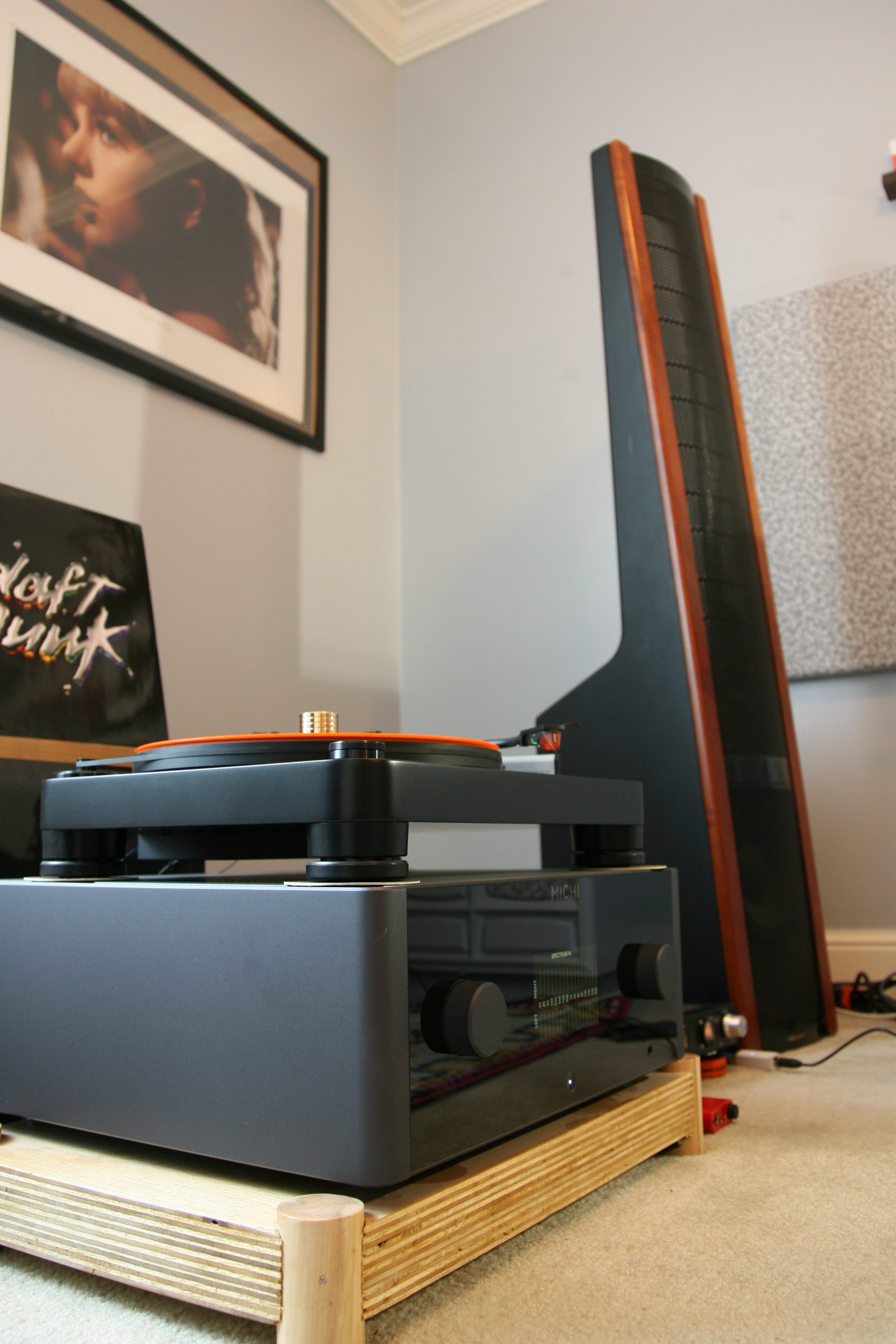

Disclaimer:
Rotel provided Hifi Chicken the Michi X5 for review on loan, Rotel, nor any affiliates paid for this review in part or full.

